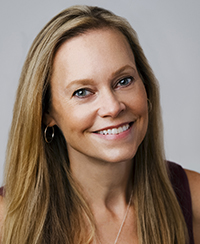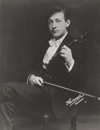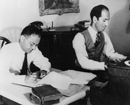Special Reports
MA Top 30 Professional: Anne Fitzgibbon

Founder, Executive Director
Harmony Program
Few classically trained musicians have years of experience working behind the scenes at New York’s City Hall. Since 2003 Anne Fitzgibbon, founder and executive director of the Harmony Program, has put those disparate backgrounds to good use. With outposts in all five New York City boroughs, the program now provides daily in-school, hands-on music education to 3,000 public elementary and secondary students every year.
“I was always interested in both music and public service,” says Fitzgibbon, who studied clarinet. “I loved music, but I was very involved with community public service. I thought those two interests were incompatible, so I chose to study public affairs.”
In 1998 she joined the New York City Mayor’s Office as a policy advisor for planning, education, and cultural affairs. The Harmony Program started as a pilot project.
“I became aware of how many students in the city had no access to music education in their schools, had no opportunity to learn to play in an orchestra or sing in a choir. It was an equity issue for me. Music had been such an important part of my life. I wanted more kids to have access to that opportunity.”
In 2007 Fitzgibbon spent a year in Venezuela on a Fulbright Fellowship studying that country’s El Sistema program.
“It really broadened my idea of my role as a music educator. I changed everything about our model. We changed from once a week to an every-day-after-school model. We went to community-based locations. We started recruiting people who were trained teachers. We had group lessons, we had ensembles. And most importantly, we were trying to prioritize communities in need.”
The Harmony Program works with New York City’s Department of Education, City University of New York, the Juilliard School, the New York Philharmonic, and artists like Wynton Marsalis and Joshua Bell.
“If you start in our beginner programs, you can go to our Saturday programs, our summer camps, our ensemble programs, and then to scholarships. We’re making a long-term investment, which is what music requires. We are behind our students from the beginning to however far they want to go.”





 FEATURED JOBS
FEATURED JOBS

 RENT A PHOTO
RENT A PHOTO


